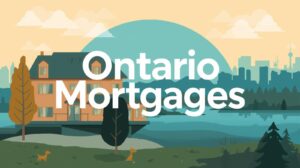
For many Canadian homeowners, the arrival of a mortgage renewal statement can trigger a mix of anticipation and anxiety, often termed “mortgage renewal shock.” This feeling is particularly prevalent in the current climate, where interest rates have seen significant fluctuations in recent years. Understanding the intricacies of mortgage renewals in Canada is crucial to making informed decisions that align with your financial goals.
The Reality of Mortgage Renewal Shock
The past few years have been a rollercoaster for interest rates. Many Canadians secured mortgages during a period of historically low rates, especially between 2020 and 2022. As these terms mature, homeowners are now facing renewal offers that are significantly higher, leading to a noticeable increase in monthly payments. This jump in costs is the essence of “mortgage renewal shock,” and it’s a reality for a substantial portion of the Canadian population. Surveys indicate that a significant percentage of homeowners expect their monthly payments to rise, with many anticipating that this increase will cause financial strain.
Current Mortgage Renewal Rates in Canada (July 2025)
As of July 2025, mortgage renewal rates in Canada generally fall within a range, with specifics depending on the lender, term length, and individual creditworthiness. While some brokerages may offer fixed rates below 3.9%, most are closer to 4%. Variable rates are currently hovering around 3.95% (Prime – 1%), with forecasts suggesting potential minor decreases by year-end.
It’s important to remember that these are general figures, and the best way to determine your potential rate is to shop around and get personalized quotes.
When to Start Assessing Your Options
The golden rule for mortgage renewal is: start early! While your current lender is obligated to send you a renewal notice at least 21 days before your term ends, this is often too late to truly explore all your options. Most lenders allow you to begin the renewal process up to 120 days (four months) before your maturity date without incurring prepayment penalties for breaking your current term early.
This four-month window is invaluable. It provides ample time to:
- Review your current financial situation: Has your income changed? Do you have new financial goals (e.g., renovations, debt consolidation, retirement planning)?
- Research current market rates: Don’t just accept your existing lender’s first offer. Compare rates from various banks, credit unions, and mortgage brokers.
- Negotiate: Use competitive offers from other lenders to negotiate a better rate with your current provider. They have an incentive to keep your business, but won’t offer their best rate unless prompted.
- Consider your future plans: Are you planning to sell your home in the next few years? Do you anticipate major life changes that might impact your financial needs?
Fixed vs. Variable Rate Options
The choice between fixed and variable rates is a fundamental decision at renewal.
- Fixed-rate mortgages offer stability and predictability. Your interest rate and monthly payments remain constant for the entire term, providing peace of mind and easier budgeting. This is ideal for those who prefer certainty and are risk-averse, especially when rates are expected to rise.
- Variable-rate mortgages fluctuate with the Bank of Canada’s prime rate. While they often start lower than fixed rates, your payments can increase if rates rise. Conversely, they can decrease if rates fall. Historically, variable rates have often saved borrowers money over the long term, but they come with increased payment uncertainty. If you have a higher risk tolerance and can absorb potential payment fluctuations, a variable rate might be appealing, especially if you anticipate rate cuts in the future.
You can read more about mortgage rate trend in Canada here: How to Handle Your Upcoming Mortgage Renewal
Longer vs. Shorter Terms
The length of your new mortgage term also significantly impacts your payments and overall costs.
- Longer terms (e.g., 5, 7, or 10 years) provide greater stability. Your rate is locked in for a longer period, protecting you from potential rate increases. However, longer terms generally come with slightly higher interest rates, and you’ll have fewer opportunities to renegotiate if rates drop significantly. This option suits homeowners who plan to stay in their homes for an extended period and prioritize payment consistency.
- Shorter terms (e.g., 1, 2, or 3 years) typically offer lower interest rates upfront. This provides more flexibility, allowing you to renew sooner and potentially capitalize on falling rates. The downside is increased exposure to market fluctuations and more frequent renewal processes. Shorter terms are often favoured by those who anticipate selling their home soon, believe rates will fall, or want the flexibility to reassess their mortgage needs more frequently.
When Higher Rates Are Unaffordable: Considering Refinancing
If the prospect of renewing your mortgage at significantly higher rates seems unaffordable or concerning, know that you have additional options beyond simply accepting the new terms. Refinancing your mortgage can be a powerful tool to manage your finances, especially if you have built up substantial equity in your home.
Refinancing allows you to replace your existing mortgage with a new one, potentially with a different lender and entirely new terms. This can be particularly beneficial for:
- Debt Consolidation: If you’re carrying high-interest debt from credit cards, personal loans, or lines of credit, you can refinance your mortgage to roll these debts into a single, lower-interest payment. Since mortgage rates are typically much lower than unsecured debt rates, this can significantly reduce your overall monthly debt obligations and save you a substantial amount in interest over time.
- Stretching Your Amortization: To lower your monthly payments, you can extend your mortgage’s amortization period (the total time it takes to pay off the mortgage). While this means you’ll pay more interest over the lifetime of the loan, it can drastically reduce your current monthly burden, providing much-needed breathing room in your budget. For insured mortgages (less than 20% down payment at purchase), the maximum amortization is generally 25 years, while for uninsured mortgages (20% or more down payment), it can often be extended up to 30 years or more.
- Accessing Home Equity: Refinancing also allows you to unlock some of the equity you’ve built in your home. You can typically borrow up to 80% of your home’s appraised value, minus your outstanding mortgage balance. This “cash-out refinance” can be used for various purposes, such as home renovations, educational expenses, or other significant investments.
It’s important to be aware that refinancing involves legal fees, appraisal costs, and potentially prepayment penalties if you’re breaking your current mortgage term early. Additionally, if you switch lenders and extend your amortization, you might need to re-qualify under the current mortgage stress test rules. However, for many homeowners facing payment shock, the long-term benefits of reduced monthly payments and consolidated debt often outweigh these upfront costs.
The Bottom Line
Mortgage renewal is a critical financial juncture. Avoid the “auto-renew” trap your current lender might offer. By starting early, diligently comparing offers, and carefully considering your risk tolerance and financial outlook, you can navigate the renewal process effectively and secure a mortgage that truly serves your needs in the years to come. Don’t hesitate to consult with a qualified mortgage professional; their expertise can be invaluable in finding the best solution for your unique situation.

